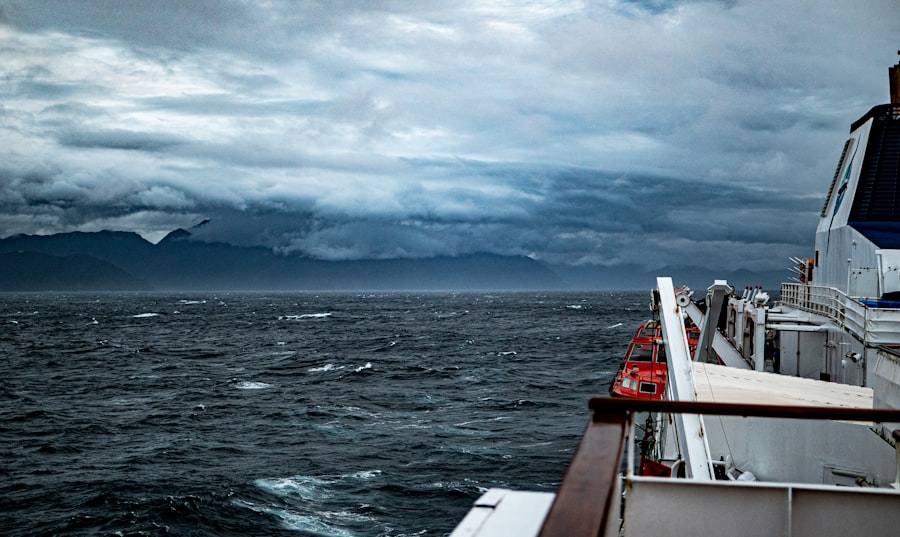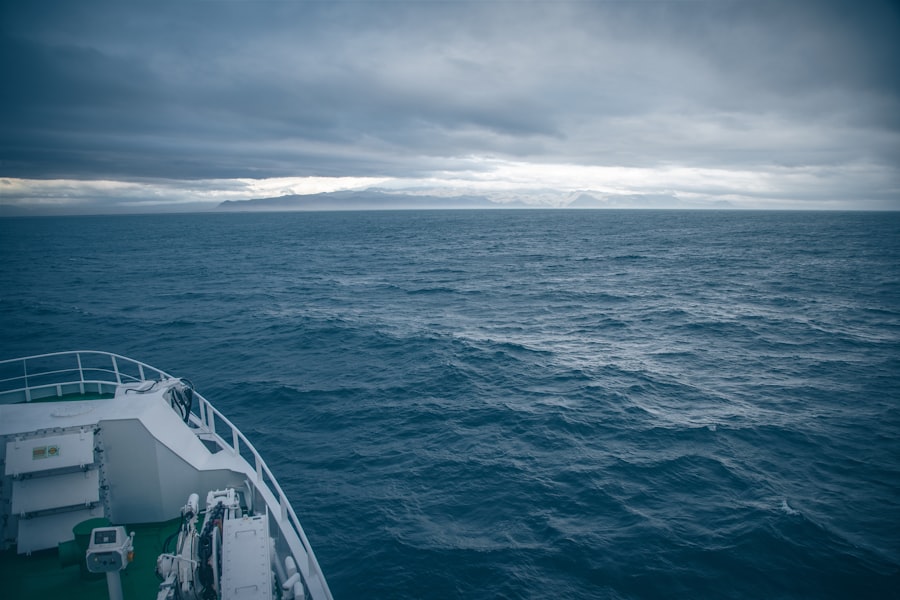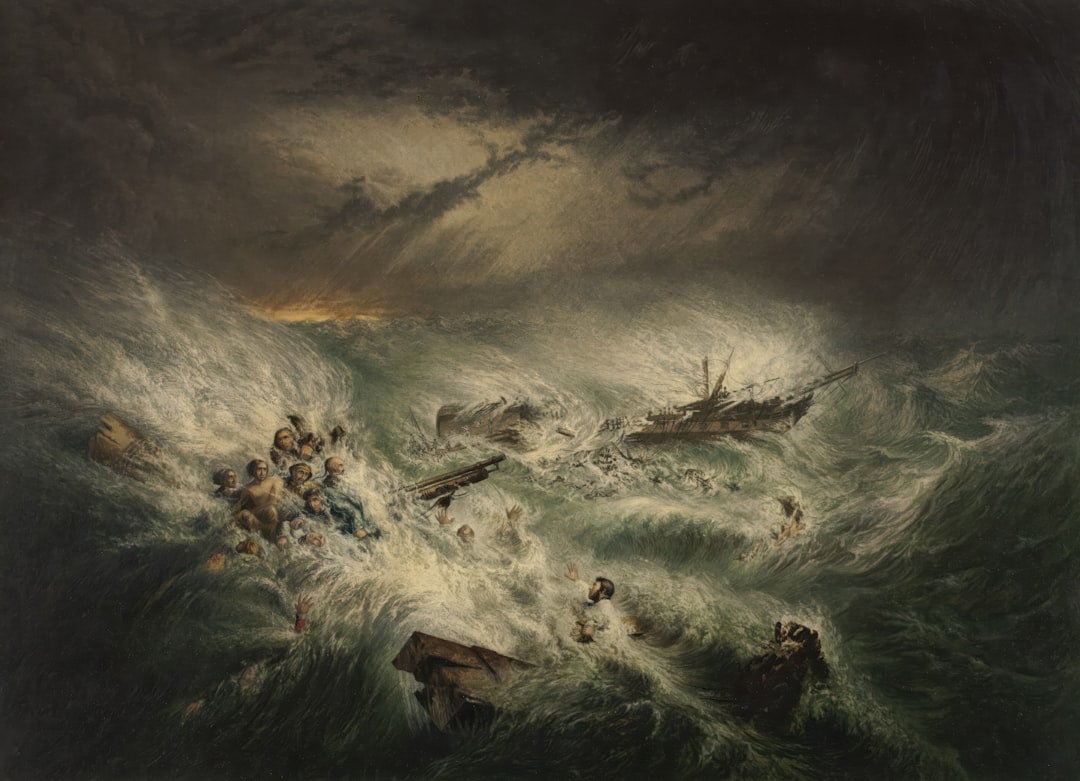The Drake Passage, a body of water that separates South America from Antarctica, is renowned for its tumultuous seas and breathtaking vistas. Named after the English explorer Sir Francis Drake, who navigated these waters in the late 16th century, the passage has become a significant route for maritime travel and exploration. Stretching approximately 600 kilometers (370 miles) between Cape Horn and the Antarctic Peninsula, it is often regarded as one of the most challenging maritime routes in the world.
The Drake Passage is not only a geographical marvel but also a gateway to the pristine wilderness of Antarctica, attracting adventurers, researchers, and wildlife enthusiasts alike. Navigating the Drake Passage is an experience that combines both beauty and peril. The waters are known for their unpredictable weather patterns and strong currents, which can create rough seas that test even the most seasoned sailors.
Despite these challenges, the passage serves as a vital link for vessels traveling to and from Antarctica, facilitating scientific research and tourism. The allure of the Drake Passage lies not only in its natural beauty but also in the sense of adventure it offers to those who dare to traverse its waters.
Key Takeaways
- The Drake Passage is a narrow body of water between South America’s Cape Horn and the South Shetland Islands of Antarctica, known for its challenging sailing conditions.
- The geographical significance of the Drake Passage lies in its role as the only connection between the Pacific and Atlantic Oceans, creating a powerful current and unique ecosystem.
- Weather patterns in the Drake Passage can be extreme, with strong winds and rough seas presenting challenges for navigation and travel.
- Proper preparation and navigation are crucial for safe passage through the Drake Passage, including experienced crew, sturdy vessels, and thorough planning.
- Safety measures and protocols for navigating the Drake Passage include emergency drills, communication systems, and adherence to international regulations for polar travel.
Understanding the geographical significance of the Drake Passage
The Drake Passage holds immense geographical significance as it connects the Atlantic and Pacific Oceans.
The passage is characterized by its deep waters and steep continental shelf, creating a dynamic marine environment that supports a diverse range of marine life.
The convergence of cold Antarctic waters with warmer currents from the north leads to rich nutrient upwellings, making it a hotspot for marine biodiversity. Moreover, the Drake Passage serves as a natural barrier that influences weather systems in the Southern Hemisphere. The strong westerly winds that sweep across the passage contribute to the formation of storms and rough seas, making navigation a formidable challenge.
This geographical feature not only impacts maritime travel but also affects the ecosystems on either side of the passage. The unique interplay of ocean currents and weather patterns creates a delicate balance that sustains the rich biodiversity found in these waters.
Weather patterns and challenges in the Drake Passage

The weather in the Drake Passage is notoriously unpredictable, characterized by rapid changes that can occur within a matter of hours. Sailors often refer to this region as “the most dangerous sea in the world” due to its fierce storms and high waves. The convergence of cold polar air with warmer air masses from the north creates an environment ripe for turbulent weather conditions.
As a result, travelers must be prepared for everything from calm seas to towering waves that can reach heights of over 10 meters (33 feet). Navigating through such challenging weather requires not only skill but also an understanding of the patterns that govern this region. The passage experiences strong westerly winds known as the “Roaring Forties,” which can lead to sudden squalls and rough seas.
Mariners must remain vigilant and adaptable, as conditions can change rapidly, often without warning. This unpredictability adds an element of excitement for adventurers but also underscores the importance of thorough preparation and respect for nature’s power.
Importance of proper preparation and navigation in the Drake Passage
| Metrics | Importance |
|---|---|
| Weather Conditions | Proper preparation ensures safe navigation through unpredictable weather. |
| Icebergs and Ice Conditions | Navigation requires careful monitoring and preparation to avoid collisions with ice. |
| Wildlife Encounters | Preparation helps in navigating around wildlife and minimizing disturbances. |
| Historical Navigation Challenges | Understanding past navigation challenges helps in better preparation for current voyages. |
Proper preparation is paramount when embarking on a journey through the Drake Passage. Given its reputation for treacherous conditions, travelers must equip themselves with knowledge and resources to ensure a safe crossing. This includes understanding weather forecasts, having reliable navigation tools, and being aware of potential hazards such as icebergs and strong currents.
Experienced sailors emphasize the importance of planning routes carefully and being ready to alter them based on real-time conditions. In addition to navigation skills, physical preparation is equally important. Travelers should be in good health and possess a basic understanding of seamanship.
Familiarity with emergency protocols and safety equipment can make a significant difference in case of unexpected challenges. The Drake Passage demands respect; those who approach it with caution and preparedness are more likely to enjoy a successful journey while minimizing risks.
Safety measures and protocols for navigating the Drake Passage
Safety measures are critical when navigating the Drake Passage, where conditions can shift dramatically.
This includes conducting thorough pre-departure checks on vessels, ensuring that all safety equipment is functional, and maintaining open lines of communication with other ships in the area.
Additionally, having a well-trained crew familiar with emergency procedures can be invaluable in times of crisis. One essential safety protocol involves monitoring weather conditions closely throughout the journey. Utilizing advanced technology such as satellite communication and weather forecasting tools allows sailors to stay informed about impending storms or changes in sea conditions.
Furthermore, maintaining a flexible itinerary enables crews to adjust their plans based on real-time information, enhancing overall safety during the crossing.
Tips for managing seasickness and discomfort during the passage

Seasickness is a common concern for travelers crossing the Drake Passage, given its notorious reputation for rough seas. To mitigate discomfort, individuals can take several proactive measures before and during their journey. One effective strategy is to choose accommodations wisely; cabins located in the middle of the vessel tend to experience less motion than those at either end.
Additionally, travelers should consider taking seasickness medication prior to departure, as this can help alleviate symptoms before they begin. Staying hydrated and consuming light meals can also contribute to comfort during turbulent crossings. Engaging in activities that distract from feelings of nausea—such as reading or socializing—can help passengers cope with discomfort.
Furthermore, spending time on deck to breathe fresh air and gaze at the horizon can provide relief for those feeling queasy. By employing these strategies, travelers can enhance their experience while navigating one of the world’s most challenging maritime routes.
Wildlife and natural wonders of the Drake Passage
The Drake Passage is not only known for its challenging conditions but also for its remarkable wildlife and stunning natural wonders. The nutrient-rich waters support an abundance of marine life, including various species of whales, seals, and seabirds. Travelers crossing this passage often have the opportunity to witness majestic humpback whales breaching or orcas hunting in their natural habitat.
The sight of these magnificent creatures against the backdrop of icy landscapes creates unforgettable memories for those fortunate enough to experience it. In addition to marine life, the passage is home to breathtaking landscapes characterized by towering icebergs and rugged coastlines. The stark beauty of Antarctica’s glaciers juxtaposed with the tumultuous sea creates a dramatic visual spectacle that captivates adventurers.
Birdwatchers will delight in spotting various seabird species, including albatrosses and petrels, which glide gracefully over the waves. The combination of wildlife encounters and stunning scenery makes traversing the Drake Passage an extraordinary adventure for nature enthusiasts.
Historical significance and exploration of the Drake Passage
The historical significance of the Drake Passage cannot be overstated; it has been a site of exploration and discovery since early maritime history. Sir Francis Drake’s expedition in 1578 marked one of the first recorded crossings of this treacherous waterway, paving the way for future explorers seeking new trade routes and territories. Over the centuries, numerous expeditions have ventured into these waters, contributing to our understanding of geography, oceanography, and climate.
The passage has also played a crucial role in scientific research related to climate change and marine ecosystems. Modern explorers continue to study its unique environment, seeking insights into global climate patterns and their implications for our planet’s future. The legacy of exploration in the Drake Passage serves as a reminder of humanity’s enduring quest for knowledge and adventure.
Alternative routes and transportation options for crossing the Drake Passage
While crossing the Drake Passage is often seen as an essential part of Antarctic expeditions, there are alternative routes and transportation options available for those seeking different experiences. Some travelers opt for air travel to reach Antarctica directly, bypassing the challenges posed by maritime navigation altogether. Flights from South America can transport adventurers directly to research stations or tourist hubs on the continent.
For those who still wish to experience the passage but prefer a more controlled environment, some cruise lines offer specialized vessels designed for comfort during rough seas. These ships are equipped with stabilizers that minimize motion, allowing passengers to enjoy their journey without succumbing to discomfort. Regardless of the chosen method, each option presents unique opportunities for exploration while accommodating varying preferences for adventure.
Testimonials and experiences from travelers who have navigated the Drake Passage
Travelers who have navigated the Drake Passage often share stories filled with awe and excitement about their experiences. Many recount moments of exhilaration as they braved rough seas while marveling at breathtaking landscapes dotted with icebergs. One traveler described their crossing as “a rite of passage,” emphasizing how overcoming challenges in such an unpredictable environment fostered a sense of camaraderie among fellow adventurers.
Others highlight encounters with wildlife as unforgettable highlights of their journeys. Witnessing whales breach or seabirds soaring overhead left lasting impressions on many travelers’ hearts. Testimonials frequently reflect on how navigating this iconic passage instilled a profound appreciation for nature’s beauty and power—a sentiment echoed by countless adventurers who have dared to traverse these waters.
The enduring allure and adventure of the Drake Passage
The Drake Passage remains an enduring symbol of adventure and exploration, captivating those who seek its challenges and wonders alike. Its geographical significance as a connector between two vast oceans underscores its importance in both maritime history and contemporary research efforts. While navigating its unpredictable waters presents formidable challenges, it also offers unparalleled opportunities for wildlife encounters and breathtaking scenery.
As travelers continue to share their experiences crossing this iconic passage, they contribute to its legacy as a site of adventure that inspires future generations to explore our planet’s most remote corners. Whether through tales of triumph over seasickness or awe-inspiring wildlife sightings, each journey through the Drake Passage adds another chapter to its storied history—a testament to humanity’s enduring spirit of exploration amidst nature’s grandeur.
The Drake Passage, known for its turbulent waters and unpredictable weather, is often considered one of the most dangerous sea passages in the world. This treacherous stretch of water between the southern tip of South America and Antarctica is notorious for its strong currents and massive waves, which can pose significant challenges to even the most experienced sailors. For those interested in learning more about the geographical and historical significance of the Drake Passage, a related article can be found on MyGeoQuest. This article delves into the unique characteristics of the passage and offers insights into why it remains a formidable route for maritime navigation. You can read more about it by visiting this page.
WATCH HERE: Drake Passage: Earth’s Deadliest Waters Revealed
FAQs
What is the Drake Passage?
The Drake Passage is the body of water between the southern tip of South America and the northern tip of the Antarctic Peninsula. It connects the Atlantic and Pacific Oceans.
Is the Drake Passage dangerous?
Yes, the Drake Passage is known for its rough seas and strong winds, making it one of the most treacherous stretches of water in the world. It is notorious for its unpredictable and severe weather conditions.
Why is the Drake Passage considered dangerous?
The Drake Passage is considered dangerous due to its strong winds, large waves, and potential for severe storms. The convergence of the Atlantic, Pacific, and Southern Oceans in this region also contributes to its challenging conditions.
Are there any safety measures in place for crossing the Drake Passage?
Experienced captains and crew members on expedition ships that traverse the Drake Passage are well-equipped to handle the challenging conditions. These ships are designed to withstand rough seas, and safety protocols are in place to ensure the well-being of passengers.
Are there alternatives to crossing the Drake Passage?
There are alternative routes to reach Antarctica, such as flying directly to the continent or taking a longer route around the tip of South America. However, the Drake Passage remains the most direct and commonly used route for reaching Antarctica by sea.
